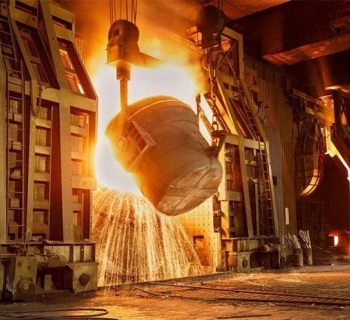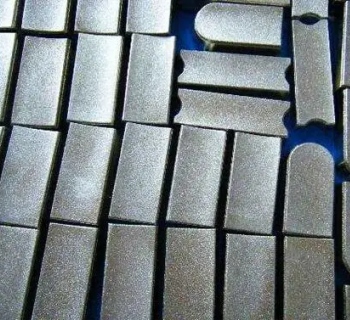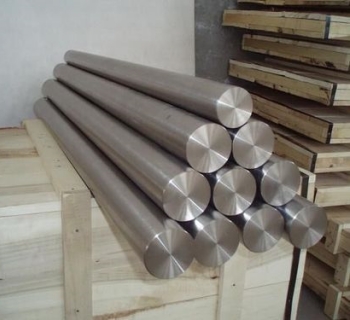1. High conductivity: Many boride powders, especially Ti, Zr, and Hf borides, have excellent conductivity, and their positive temperature resistance coefficient makes them important applications in the electronic field.
2. High melting point and high hardness: Boride powders typically have high melting point and high hardness, which makes them excellent in high-temperature and wear-resistant applications. For example, borides can manufacture high-temperature materials, such as rocket structural components, aviation equipment, etc.
3. Chemical stability: Boride powder has good corrosion resistance to humid air and dilute hydrochloric acid but is soluble in nitric acid. This chemical stability allows borides to maintain their performance in many chemical environments.
4. Multifunctionality: Boride powder has various properties such as flame retardancy, antibacterial, anti-corrosion, and toughening, making it widely used in various fields such as medicine, agriculture, construction, textiles, electronics, and automobiles.
5. Nanoscale particle size: Boride powder has a fine particle size, with 2-5% at the nanoscale and an average particle size of 500 nanometers. This nanoscale particle size gives boride powder a high surface area and surface energy, providing unique advantages in many industrial applications.
1.Metal smelting: Boride powder can be a deoxidizer in metal smelting to prevent metal oxidation at high temperatures. At the same time, it can also improve the mechanical properties of metals and increase their strength and hardness.

Boride powder used as a deoxidizer in metal smelting process
2.Preparation of carbides and metal borides: Boride powder is an important raw material for preparing special-purpose carbides and metal borides. For example, it can prepare compounds such as MgB2, CaB, FeB, etc., which have important applications in superconductivity, ceramics, and wear-resistant materials.

Boride powder is an important raw material for preparing wear-resistant materials
3.Industrial sector: Boride powder is an indispensable raw material in the weapons industry, aerospace industry, automobile manufacturing industry, national defense industry, etc. It can be used to manufacture high-performance alloys, ceramic composites, wear-resistant components, etc., to improve product performance and service life.

Boride powder used for manufacturing high-performance alloys
4. Other fields: Boride powder is also applied in the cutting tool industry, wire drawing molds, the coating industry, functional film materials, electrical conductivity, electrical contacts, and other fields. It can improve the product's conductivity, corrosion resistance, wear resistance, and other properties.

Company Profile
NANOTRUN(www.rboschco.com) is a trusted global chemical material supplier & manufacturer with over 12-year-experience in providing super high-quality chemicals and nanomaterials, including boride powder, nitride powder, graphite powder, sulfide powder, 3D printing powder, etc.
The company has a professional technical department and Quality Supervision Department, a well-equipped laboratory, and equipped with advanced testing equipment and after-sales customer service center.
If you are looking for high-quality Boride Powder, please feel free to contact us or click on the needed products to send an inquiry.
Payment Term
L/C, T/T, Western Union, Paypal, Credit Card etc.

Shipment Term
By sea, by air, by express, as customers request.
Storage Conditions:
1. Sealed container: Boride powder should be stored in a sealed container to combat moisture and oxygen from entering the air. These containers should be waterproof and fully enclosed to ensure the powder is not exposed to the external environment.
2. Dry environment: Boride powder should be stored in a dry environment, as moisture may cause the powder to clump or undergo other chemical changes. Dehumidifiers or air conditioners can be used to keep the storage environment dry.
3. Avoid high temperatures: Although boride powders usually have a high melting point, prolonged exposure to high temperatures should still be avoided as this may prompt changes in the chemical properties of the powder. Therefore, the storage location should avoid direct sunlight, and the temperature should be controlled within a certain range.
4. Avoid light: Some boride powders may be affected by light, so they should be stored in a dark place, such as using black or dark containers to block light.
5. Marking and recording: The stored boride powder should have clear markings, including its name, production date, storage conditions, and other information. In addition, the status of the powder should be regularly checked, and any changes should be recorded.
6. Safety precautions: Some boride powders may be toxic or irritating, so appropriate protective equipment, such as gloves, masks, etc., should be worn during handling and storage. At the same time, it should be ensured that the storage location is away from children and pets.
Q1
What are the synthesis methods for boride powder?
Re:The synthesis methods of boride powder mainly include direct synthesis, thermal reduction, self-propagating high-temperature synthesis, and mechanical alloying. The direct synthesis method usually involves chemical reactions at high temperatures, causing boron to react with metals or metal oxides to generate corresponding borides. The thermal reduction law utilizes reducing agents to reduce metal oxides at high temperatures, resulting in compounds of metal and boron. The self-propagating high-temperature synthesis method utilizes the exothermic reaction between reactants to initiate the reaction and generate boride powder. The alloying method uses mechanical means such as ball milling to react metal powder with boron powder in the solid state and synthesize boride powder.
Q2
Can the conductivity of boride powder be optimized through some method?
Re:The conductivity of boride powder can be optimized through various methods. A common method is to control the purity of borides, reduce the presence of impurities, and thus improve their conductivity. In addition, by adjusting the composition and structure of borides, such as changing the ratio of boron to metal or introducing other elements for doping, their conductivity can also be effectively improved. In addition, nanotechnology has also been applied to optimize the conductivity of boride powders by reducing particle size, increasing surface area and surface energy, and thereby improving their conductivity.
Q3
What is the deoxygenation effect of boride powder in metal smelting?
Re:Boride powder is used as a deoxidizer in metal smelting, and its deoxidation effect is significant. Boride powder can react with oxygen in metals to form borate or oxide, thereby reducing the oxygen content in the metal. This deoxidation process can effectively improve the mechanical properties of metals and enhance their purity and processing performance. The deoxidation effect of boride powder in the metal smelting process depends on factors such as its type, dosage, and smelting conditions.
Q4
Can the composite of boride powder and other materials improve performance?
Re:The composite of boride powder with other materials can improve performance. By combining boride powder with metals, ceramics, or other polymer materials, the advantages of various materials can be corpus to improve the mechanical properties, conductivity, thermal stability, etc., of composite materials. For example, combining boride powder with metal can form composite materials with high strength, hardness, and high conductivity, which are suitable for aerospace and automotive manufacturing.
Q5
How can the performance of boride powder remain stable in high-temperature environments?
Re:Maintaining the stable performance of boride powder in high-temperature environments is a challenge. Some measures can be taken to maintain the stability of boride powder performance. Firstly, selecting a type of boride with a high melting point and stability is crucial. Secondly, optimize the preparation process of boride powder, control its particle size and distribution, and improve its thermal resistance. In addition, doping with other elements or forming composite materials can also enhance the high-temperature stability of boride powders. In practical applications, appropriate protective measures can also be taken, such as coating or packaging techniques, to reduce the impact of high temperatures on the properties of boride powder.




